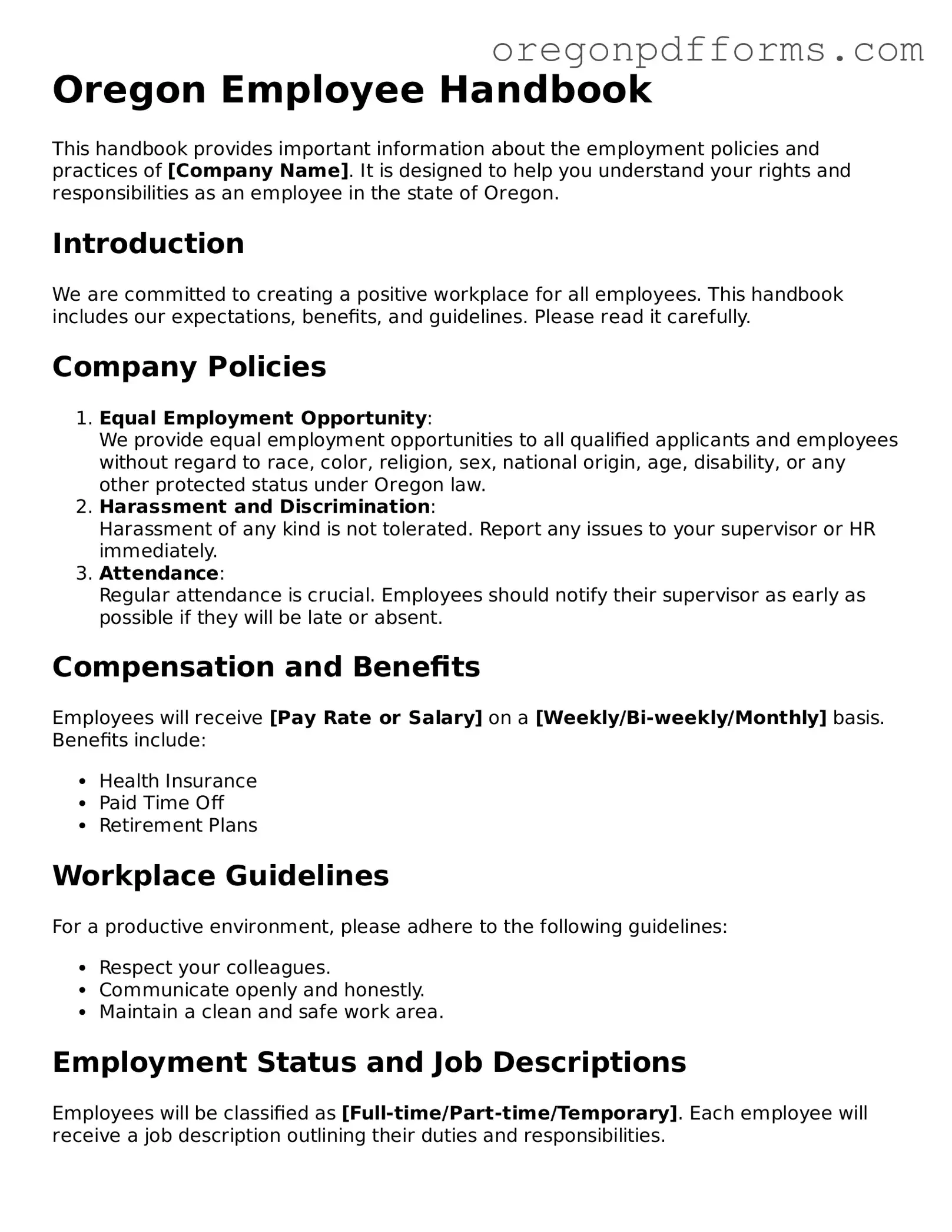Valid Employee Handbook Document for Oregon
The Oregon Employee Handbook form serves as a vital document that outlines an organization’s policies, procedures, and expectations for its employees. This comprehensive guide not only helps ensure compliance with state and federal laws but also fosters a positive workplace culture. By clearly communicating the rights and responsibilities of both employers and employees, the handbook can significantly enhance organizational effectiveness.
Open My Employee Handbook
